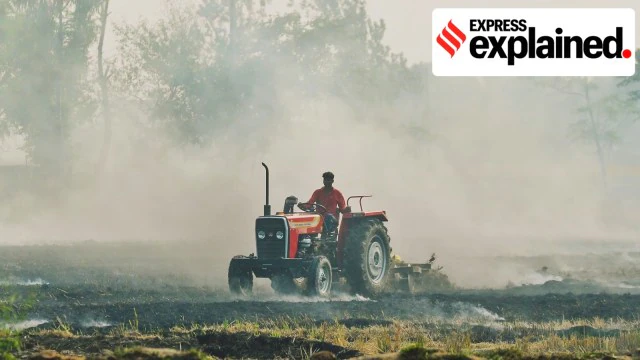PUSA-44

Copyright infringement not intended
Picture Courtesy: Indian Express
Context: A new rice variety to replace Pusa-44 is proposed to mitigate the issue of crop residue burning and address the environmental challenges associated with the cultivation and harvest of Pusa-44.
Details
- Pusa-2090 has undergone testing in trials, including those by the All-India Coordinated Rice Improvement Project, and has received official approval for cultivation in Delhi and Odisha.
- Farmers in Punjab, where Pusa-44 is extensively planted, are expressing interest in adopting Pusa-2090 due to its claimed advantages.
- The expectation is that Pusa-2090, with its shorter duration, could serve as a viable alternative to Pusa-44 and potentially reduce incidents of stubble burning in the region.
Development of Pusa-2090
- The Indian Agricultural Research Institute (IARI) has recently introduced a promising rice variety, Pusa-2090, positioned as an improved version of the widely cultivated Pusa-44.
- This development aims to address the challenges associated with the long duration of Pusa-44, which often leads to stubble burning due to time constraints in field preparation for the subsequent wheat crop.
Characteristics of Pusa-44
- Pusa-44, known for its remarkable yield of 35-36 quintals per acre, requires a substantial 155-160 days to reach maturity.
- While its productivity is appreciated, the extended growth cycle poses challenges for farmers, particularly in regions like Punjab.
Birth of Pusa-2090
- Recognizing the need for a more sustainable alternative, IARI embarked on a breeding program to develop a variety that retains the high yield of Pusa-44 but matures in a significantly shorter duration.
- Pusa-2090 is the result of a strategic crossbreeding between Pusa-44 and CB-501, an early-maturing Japonica rice line obtained from the International Rice Research Institute in the Philippines.
- This hybridization aims to combine the favourable characteristics of Pusa-44 with the early maturation traits and structural strengths of CB-501.
- Pusa-2090 is designed to offer not only a yield comparable to Pusa-44 but also a reduced maturation period of 120-125 days. This shorter growth cycle is anticipated to provide farmers with more flexibility in field management and reduce the instances of stubble burning.
Conclusion
- The introduction of Pusa-2090 represents a significant step towards sustainable agriculture, offering farmers a high-yielding variety with a shorter maturation period. As this innovative rice variety gains traction, it holds the promise of not only addressing current challenges but also contributing to the broader goal of agricultural sustainability and environmental conservation.
Must Read Articles:
Pusa-44 Paddy Variety: https://www.iasgyan.in/daily-current-affairs/pusa-44-paddy-variety
|
PRACTICE QUESTION Q. How have recent advancements in technology and sustainable farming practices impacted the agricultural landscape in India, and what challenges and opportunities do farmers face in adopting these innovations for improved productivity and environmental conservation? |



.jpg)
.jpg)
1.png)
